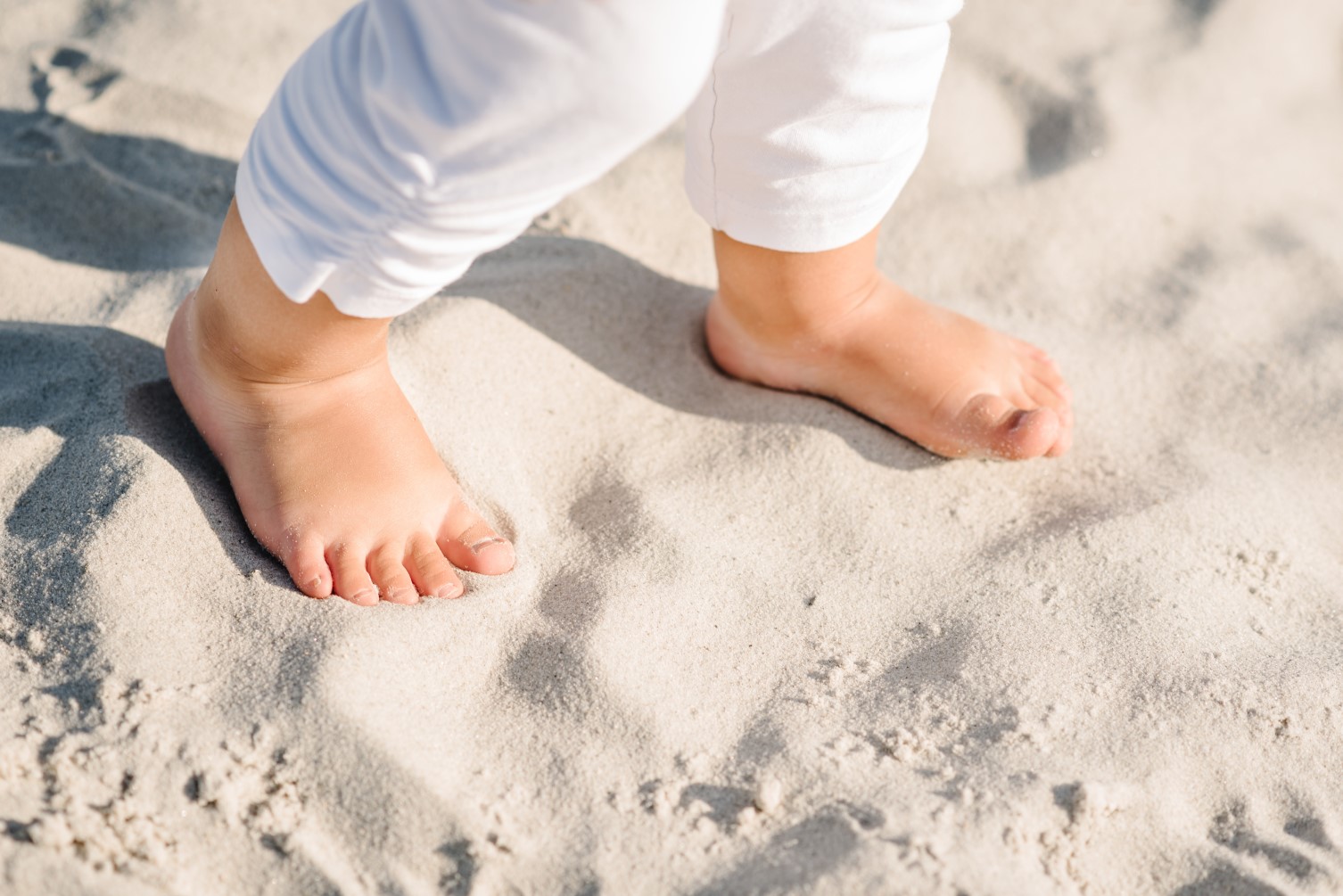
We all want our children to be healthy, and that includes foot health. When we spot something we don’t think is quite right, it’s easy to worry about the effects it will have on them as they grow and develop - but not all differences are dangerous or bad for your child’s health. If you suspect your child might have flat feet, the best thing to do is to find out more about the condition and what it means for the future.
Flat feet, also known as ‘fallen arches’, is a condition where the bottom of your feet lie flat on the ground when you’re in a standing position. You might expect your feet to be flat on the floor, but they’re actually designed to have curves that affect the way you stand. So if your child’s feet aren’t flat, what are they?
First of all, let’s take a moment to think about the structure of the foot. The foot contains several arches which dictate its shape and structure. These arches are made up of bones, muscles, ligaments and tendons. The transverse arches run in parallel arcs across your foot in a similar way to a buckle on your shoe. You also have two longitudinal arches which run perpendicular to the transverse arches - going roughly from toe to heel. These are the lateral arch, which runs along the outside edge of your foot, and the medial arch, which runs along the inside edge.
When your child stands with their feet apart, you should be able to see their arches in action. The lateral, outer arch - which goes from their littlest toe to their heel - should be flat on the ground. Meantime, the medial, inner arch - the one that goes from the big toe to the heel - may be either flat on the ground or may arch to some extent. How pronounced this inner arch appears varies from person to person. For those who have flat feet, the arch is very weak and looks almost flat - hence the name of the condition.
In some rare cases, flat feet can be caused by other medical issues. For example, muscular conditions such as spina bifida can cause flat feet, as can cerebral palsy. Flat feet might develop after an injury or other incident which causes the tissues in the feet to stretch, straightening the arch into a flatter line. Additionally, flat feet may occur as a developmental issue where the bones of the feet don’t form properly in the womb.
As we’ve mentioned, these causes are rare, and it’s far more likely that your child’s feet are flat because that’s just how they’re meant to be. Humans are all slightly different, and a combination of genetics and environmental influences (such as gait, for example) may mean that your child’s feet are naturally flat. In fact, flat feet can run in families, so your child might have flat feet simply because you or your partner does.
Children are particularly likely to have flat feet when they are very young, as they are still learning how to walk properly. Many children naturally have flat feet until around the age of six. After this age, the bones of the foot tend to change their structure slightly as part of the growth process, at which point they develop an arch. Around 95% of children who had flat feet develop an arch in childhood, but this doesn’t necessarily mean there’s anything to worry about if your child has flat feet past that age. Most people with flat feet don’t have any problems resulting from the condition.
Having flat feet is a relatively common condition, especially in children. It’s estimated that as many as one in five adults in the UK have fallen arches - that’s 20% of the adult population. Having flat feet is certainly not unusual in children, but if you have any concerns about your child’s feet you should consult your doctor for specific advice.
If you’re worried about your child’s feet, the best course of action is to speak to a medical professional. They will be able to recommend treatment - although this is rarely necessary if your child isn’t experiencing any other symptoms apart from the physical flat-footedness. Typically, if your child isn’t in pain or feeling stiffness as a result of their flat feet, there’s nothing to worry about.
However, having flat feet can lead to shoes wearing out unevenly, which may lead to frequently worn shoes like school shoes being replaced more often. Insoles or custom orthotics can help to reduce this risk by evening out the pressure on the shoes, and also lifting the arches. Many of our shoes have removable insoles so orthotics can be easily inserted to make children with flat feet feel comfortable and supported.
Author: Click Consult, published 28-02-2023.